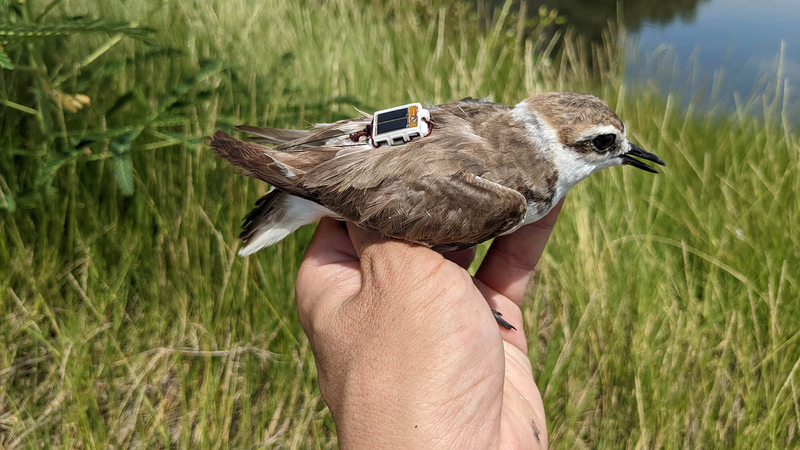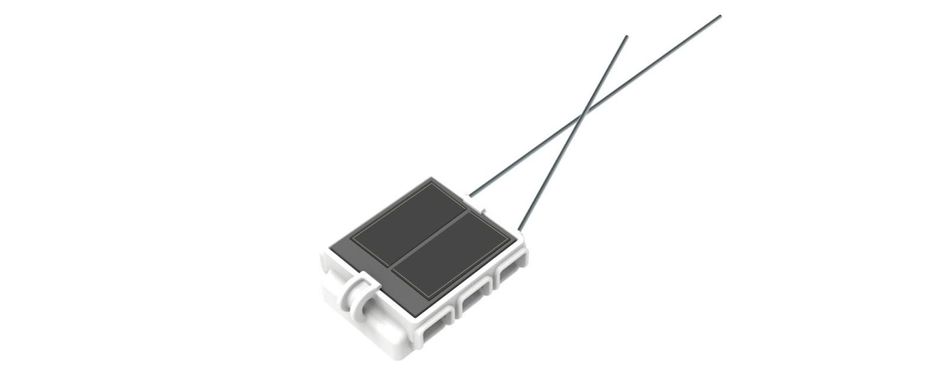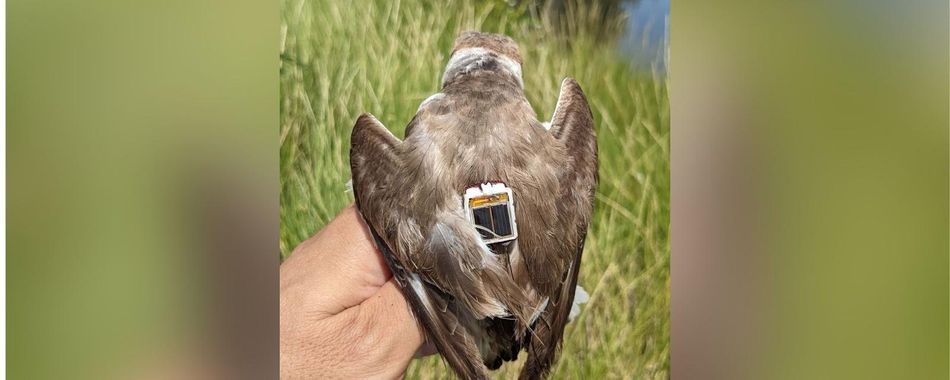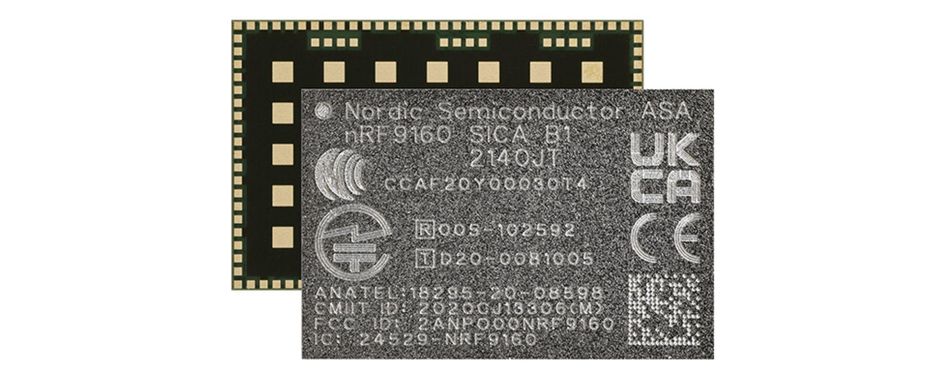Cellular IoT and Bluetooth LE-Powered Smart Wearables for Wildlife Tracking and Research
Wearable wildlife tracking solutions using cellular IoT, and Bluetooth LE can revolutionize environmental research and contribute significantly to the preservation of ecosystems and biodiversity.

Source: DEBUT Ultra - Druid Technology
Attention engineers, entrepreneurs, inventors, and developers!
The Connect for Good: Low Power Sustainability Challenge is seeking project submissions utilizing low-power wireless technology to support the United Nations Sustainable Development Goals.
The most innovative idea will receive a grand prize of $20,000 and in-kind project support. The first 100 valid entries will receive an nRF9160 Development Kit valued at over $150. If needed, further kits can be purchased at mouser.com.
Submit your projects by October 12th, 2023.
Introduction
Wildlife tracking plays a crucial role in scientific research, environmental conservation, and sustainable development. It helps researchers gain insight into the complex interactions within ecosystems and the effects of human activities on these natural systems. It is integral to supporting the protection and growth of wildlife populations, aligning with the United Nations Sustainable Development Goals (UN SDGs) aimed at preserving ecosystems, promoting biodiversity, and fostering a harmonious coexistence between humans and wildlife.
A challenge of wildlife tracking has been data transmission limitations and device size. These issues are being solved by recent developments in Bluetooth Low Energy (Bluetooth LE) and Cellular Internet of Things (IoT), which enable the development of compact devices that open up new opportunities for scientists to monitor wildlife more effectively and efficiently.
In this article, we will discuss the features, design, and benefits of a cutting-edge wildlife-tracking solution that utilizes Cellular-Io), Bluetooth LE, and highly precise sensing technologies. We will explore the role of Nordic Semiconductor's nRF9160 SiP in enabling the functionality of this advanced tracking system.
Additionally, we’ll provide an overview of the Connect for Good engineering challenge which invites engineers and developers to submit their ideas for using low-power wireless technologies to achieve the UN-SDGs.
Challenges in Wildlife Tracking
Wildlife tracking plays a vital role in conservation efforts, scientific research, and our understanding of ecosystems. Effective monitoring and study of animals in their natural habitats come with various problems that researchers are trying to address. Some of the challenges include:
- Data transmission limitations: Many traditional tracking systems struggle to transmit data over long distances or in challenging environments. This can hinder researchers' ability to collect essential information on animals living in remote or inaccessible areas. Leveraging communication technologies like cellular IoT and Bluetooth LE connectivity ensures reliable and efficient data transmission even under challenging conditions.
- Limited data collection capabilities: Older tracking devices may not be equipped to collect the diverse range of data necessary for comprehensive wildlife research. They may not even have an effective power management system to let them last for long enough. These limitations can restrict the depth and breadth of insights that can be gained from monitoring animal populations.
- Invasive monitoring: Some tracking methods can be invasive and negatively impact the behavior and well-being of flora and fauna being studied. Modern solutions like DEBUT Ultra, with its lightweight and compact design, minimizes the chances of disruption, allowing for more accurate and ethical data collection.
- Scalability and affordability: Deploying and maintaining large-scale wildlife tracking systems can be costly and logistically challenging. The use of low-power connectivity technologies and its energy-efficient design reduces the overall cost of ownership, making it more feasible for researchers to deploy and maintain larger-scale tracking networks.
- Device durability and longevity: Traditional wildlife tracking devices may not withstand harsh environmental conditions, leading to premature failure and a loss of valuable data. Research today focuses on durability, ensuring that wildlife tracking solutions can operate effectively in various climates and conditions, providing researchers with uninterrupted data collection.
- Real-time data access and analysis: Traditional wildlife tracking systems may require researchers to manually retrieve devices and analyze data after an observation period, which can be time-consuming and resource-intensive. Devices like DEBUT Ultra solve this challenge by offering real-time remote data access and analysis, enabling researchers to make informed decisions and adapt their research strategies more efficiently.
- Interoperability and data integration: The diversity of tracking technologies and data formats can make it difficult for researchers to integrate and analyze data from multiple sources. Use of standard data formats and protocols simplifies data integration, allowing researchers to easily combine and compare data from different devices and research initiatives.
Cellular IoT and Bluetooth LE have revolutionized wildlife tracking by addressing the challenges faced by researchers in the past, leading to more effective monitoring efforts. These advanced technologies offer reliable data transmission, even in remote or challenging environments, and enable devices to collect diverse data while maintaining low power consumption. They also improve scalability and affordability by reducing the overall cost of ownership and simplifying device management. Additionally, devices using cellular IoT and Bluetooth LE can be designed to withstand harsh environmental conditions, ensuring their longevity and providing uninterrupted data collection.
These technologies also offer real-time remote data access and analysis, allowing researchers to make informed decisions and adapt their research strategies more efficiently. Using standard data formats and protocols simplifies data integration, making it easier for researchers to combine and compare data from different devices and research initiatives.
CASE STUDY: Druid DEBUT Utra 5G Cellular IoT and Bluetooth® LE Wildlife Tracking Solution
The DEBUT (Devices of Biological Ubiquitous Telecommunication) Ultra 5G by Druid Technology is a smart wearable wildlife tracking solution that leverages cellular IoT and Bluetooth LE to gather and transmit data on animals in their natural habitats. This platform is designed to support a wide range of stakeholders, such as research institutions, government agencies, and conservation organizations.
The DEBUT Ultra core features include multiple built-in sensors, such as light, temperature, and air pressure sensors, which enable the device to monitor and record valuable information such as thousands of data points about the microenvironment surrounding an animal. The device measures less than 2 cm in length and has a weight range of 1.5 to 3 grams, depending on the selected wireless radio. Featuring IP68 waterproofing, it is capable of operating in temperatures ranging from -20°C to 60°C. The DEBUT Ultra is equipped with a 10 mAh battery, which is recharged by solar cells, enabling unlimited operations throughout its lifecycle.
The device’s features are particularly useful when studying animals in flight, where environmental conditions can vary dramatically. The device also gathers essential geolocation data, including latitude, longitude, altitude, speed, and acceleration, making it highly adaptable for different data collection applications, even those with strict equipment weight limitations.
One of the key technological advancements in the DEBUT Ultra is its integration of Nordic Semiconductor's nRF9160 System-in-Package (SiP), which serves as the main processor for the device's sensors. The chip is a highly integrated, low-power component that features a 64 MHz Arm® Cortex®-M33 processor, ample flash and RAM memory, a modem, a Power Management Integrated Circuit (PMIC), a global navigation satellite system (GNSS), and a Radio Frequency (RF) front end in a compact package. This integration enables the DEBUT Ultra to maintain its lightweight and compact design while providing the processing power necessary for on-device behavior analysis and edge computing.
The nRF9160 SiP also provides the GNSS positioning and cellular IoT connectivity required for transmitting the collected data to the cloud. By supporting both Long Term Evolution for Machines (LTE-M) and Narrowband (NB-IoT) cellular standards, the SiP ensures reliable and efficient data transmission across various environments, including remote or challenging locations where traditional tracking systems may struggle.
Moreover, the DEBUT Ultra incorporates a Nordic nRF52840 System-on-Chip (SoC) to provide Bluetooth LE connectivity, allowing users to control and configure the device through an associated smartphone app. This connectivity also enables visualization of the location, trajectory, surrounding environment, and behavior analysis of tracked animals in real time.
The platform's energy management system and lightweight, rechargeable photovoltaic cells further contribute to its innovative design. These features ensure sustainable power consumption, allowing for unlimited operation throughout the device's life cycle and reducing the environmental impact often associated with disposable batteries.
By integrating advanced technologies and offering a comprehensive solution for wildlife tracking, the DEBUT ULTRA is set to change the way researchers, conservationists, and government agencies collect, analyze, and utilize data in their efforts to better understand and protect the environment.
Nordic Semiconductor's nRF9160 SiP Powers DEBUT ULTRA 5G
At the core of the DEBUT Ultra is Nordic Semiconductor's nRF9160 SiP, which serves as the main processor for its integrated sensors. The SiP offers numerous benefits that make it an ideal choice for this wildlife tracking solution, such as:
- Compact size: The nRF9160 SiP's small form factor enables DEBUT Ultra to maintain its lightweight and compact design, minimizing disruption to animal behavior and ensuring more accurate data collection.
- Dual-mode LTE-M/NB-IoT communication: The nRF9160 SiP supports both LTE-M and NB-IoT cellular standards, providing reliable and efficient data transmission in a wide range of environments.
- Powerful processor: The SiP's 64 MHz Arm® Cortex®-M33 processor offers enough computational power for on-device behavior analysis and edge computing, further enhancing the DEBUT Ultra's capabilities.
- Low power consumption: The nRF9160 SiP's energy-efficient design aligns with DEBUT Ultra's focus on sustainable power management, ensuring minimal environmental impact and maximizing battery life.
- Large memory capacity: The SiP's generous Flash and RAM capacities enable DEBUT Ultra to store and process large amounts of data, allowing for more comprehensive wildlife research and analysis.
- Over-the-air device firmware update (OTA-DFU) functionality OTA-DFU capabilities allow for remote updates and maintenance of the DEBUT Ultra, ensuring that: the device remains up-to-date and functional in the field.
Nordic Semiconductor's commitment to product evolution and technical collaboration has been instrumental in the development of the DEBUT Ultra. Their ongoing support and expertise enable companies like Druid Technology to continue innovating and pushing the boundaries of wildlife tracking technology.
Suggested reading: Agriculture gets smart with cellular IoT and Bluetooth LE
Connect for Good: Low Power Wireless Sustainability Challenge
Join us in a global effort to improve the world by using your creative minds and skills to solve issues related to sustainable living and the environment.
We seek project submissions utilizing low-power wireless technology to support the United Nations Sustainable Development Goals.
The challenge focuses on four of the goals that relate to cities and sustainability: Goal 7: Affordable and clean energy, Goal 11: Sustainable Cities and Communities, Goal 13: Climate Action and Goal 15: Life on Land.
How to enter
Step 1. Submit your entry via this form. You will be asked for a comprehensive project description, including which sustainability goal/s you are addressing, details of your team, and images or videos that support your idea.
Step 2. If you are one of the first 100 valid entries, we will provide you a free nRF9160 DK to begin to develop your project.
Step 3. Update your submission with a progress report and images via this form. Updating us on your progress is not mandatory, but the jury will value projects demonstrating project development.
Key dates
Challenge launch: April 13th, 2023
Challenge closes: October 12th, 2023
Winner announcement: November 8th, 2023
Conclusion
The Druid DEBUT Ultra 5G, powered by Nordic Semiconductor's nRF9160 SiP, is a wildlife tracking solution with the potential to significantly advance scientific research, environmental conservation, and sustainable development. Its lightweight design, range of sensors, and efficient power management systems address many of the challenges faced in traditional wildlife tracking. Moreover, the device's connectivity options ensure reliable data transmission and analysis, even in remote and challenging environments.
Technologies like the DEBUT Ultra will be useful tools to achieve the UN SDGs and create a better future for our planet and its inhabitants. By embracing innovation and prioritizing sustainable development, we can work together to protect ecosystems, preserve biodiversity, and promote the harmonious coexistence of humans and wildlife.
About the Sponsor: Nordic Semiconductor
Nordic Semiconductor is a global leader in low-power wireless connectivity, offering cutting-edge solutions for various applications, including IoT, wearables, and smart homes. With expertise in diverse technologies such as Bluetooth Low Energy, ANT+, Zigbee, Thread, LTE-M/NB-IoT cellular IoT and low power Wi-Fi. Nordic's dedication to innovation makes them a reliable partner in addressing global challenges and driving technological advancements.

References
[1] The 17 goals, United Nations - Department of Economic and Social Affairs, [Online], Available from: https://sdgs.un.org/goals
[2] Lightweight sensor device uses Nordic-enabled cellular IoT to help scientists track wildlife, Nordic Semiconductor, 6th October 2022, [Online], Available from: https://www.nordicsemi.com/News/2022/10/Druid-Technology-DEBUT-ULTRA-5G-uses-nRF9160-SiP



